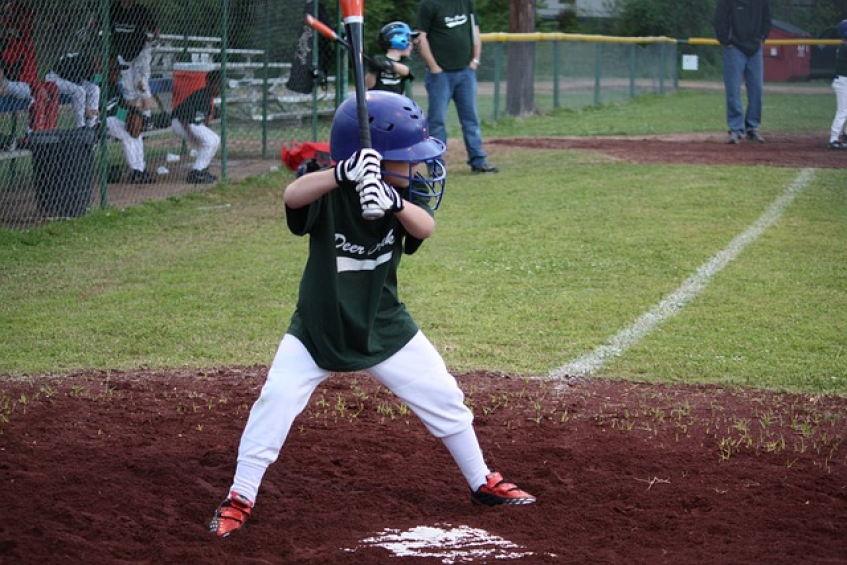
Welcome to the exciting world of baseball, a game adored by millions of people around the globe. The charm of a sunny afternoon at the ballpark, the deafening cheer of a home run, the fierce competition between teams; baseball is an iconic sport that captivates the hearts of many. But behind every powerful hit and sensational Little League game is a crucial piece of equipment – the baseball bat.
Baseball's history dates back to the 18th century, with the first recorded game being played in 1846. However, it wasn't until the late 1850s that the baseball bat began to take on the modern form we're familiar with today. Early bats varied in size and shape, and players typically made their own. As the game evolved, so did the bats, leading to the professional-grade baseball bats we see today. These bats are meticulously crafted, varying in material, weight, size, and design to optimize player performance.
As we look across different levels of play - from Major League Baseball (MLB) to college baseball and Little League - there is a fascinating divergence in the types of bats used. In the MLB, only wooden bats are allowed, maintaining the sport's tradition and ensuring an equal playing field. In contrast, college baseball and Little League predominantly use aluminum bats. These metal bats are prized for their light weight and durability. This blog post aims to explore this dichotomy, delve into the intricacies of different bat types, and analyze the ongoing debate between aluminum metal bats and wood bats.
We'll guide you through the history and science behind baseball bats, explain their role in different leagues, and uncover some fun and interesting insights. We'll also provide advice on choosing the right bat and speculate on the future of baseball bat technology. Whether you're a seasoned baseball veteran, an aspiring Little Leaguer, or just a curious enthusiast, there's something for you in this comprehensive exploration of metal bats and wooden alike. Let's step up to the plate and get started!
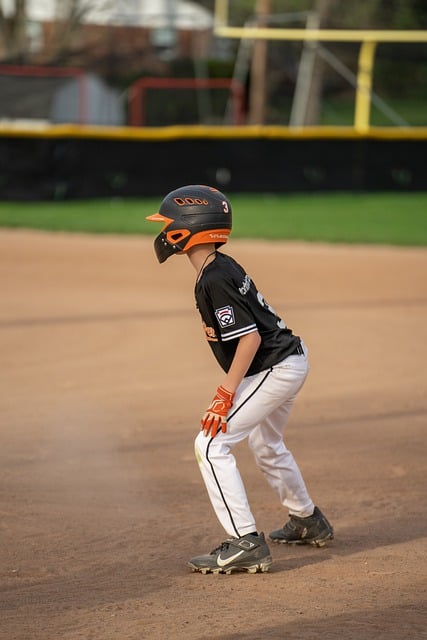
In the fascinating world of baseball, bats are not merely clubs made for striking a ball; they are a product of ingenuity, engineering, and evolution. Let's delve into the different types of baseball bats commonly used in Little League and other leagues.
Aluminum Bats: Also known as metal bats or alloy bats, these have been around since the 1970s. Aluminum bats are a popular choice in amateur baseball for their durability, lighter weight, and larger sweet spot, allowing for higher bat speed and increased control for players. Unlike wood bats, the metal bats rarely break, leading to a longer lifespan.
Wood Bat: The classic wood bat is what comes to mind when one thinks of baseball. These are primarily used in professional leagues, and they come in various types:
Ash Bats: Light and flexible, ash bats offer a significant sweet spot and are forgiving on mis-hits due to their unique grain structure. However, they are less durable than their counterparts.
Maple Bats: Dense and hard, maple bats provide excellent resilience and a tight grain structure. This gives players a solid feel and a higher chance of hitting the ball farther.
Birch Bats: A middle-ground between ash and maple, birch bats offer flexibility like ash and the hardness of maple, becoming more resilient over time.
Composite Bats: These are made of a mixture of plastic and graphite, making them lighter than wood bats but heavier than aluminum bats. Composite bats offer a larger sweet spot and reduced vibration, but they tend to be more expensive and less durable than aluminum bats.
Corked Bats: These are illegally modified bats, where the inside is hollowed out and filled with cork, rubber, or other materials to make the bat lighter. A lighter bat allows for a faster swing, theoretically leading to farther hits.
As diverse as these bats are, they share common attributes that determine their performance: bat weight, bat speed, barrel size, and the sweet spot. The bat weight affects the speed and control of the swing. Bat speed is a crucial factor in generating power for the hit. The barrel size impacts the hitting surface area, and the sweet spot is the ideal contact point on the bat for maximum ball speed. These elements combine to define the unique characteristics of each bat type and contribute to the player's overall performance.
For more reading, check out our list of the best youth wood bats.
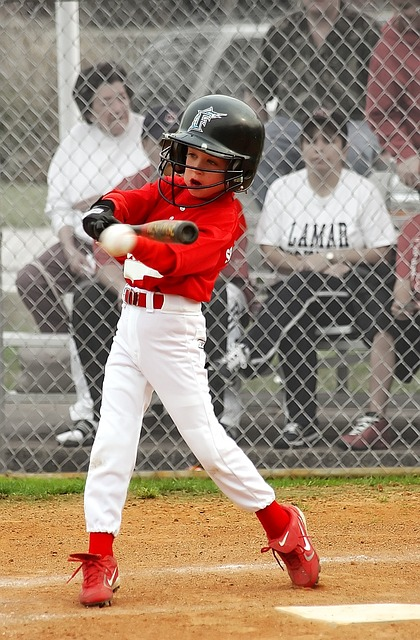
The debate between aluminum and wood bats is an ongoing conversation in Little League and professional baseball alike, often centered around performance, durability, cost, and safety.
When it comes to performance, aluminum bats generally have an edge. Due to the 'trampoline effect', these bats have a greater rebound effect, which can result in higher batted ball speeds. In addition, the lighter weight of aluminum metal bats allows for increased bat speed and control, potentially resulting in more successful hits.
Durability is another area where aluminum bats shine. Unlike a wood bat, they rarely break, which makes them a long-lasting option for amateur and Little League players. This durability, coupled with performance advantages, often leads to their higher cost. However, considering their lifespan, the cost can be justified over time.
Despite these advantages, professional leagues predominantly use wooden bats. Why? A primary reason is tradition; baseball purists argue that wooden bats maintain the integrity of the game. Another crucial factor is safety. Batted ball speeds can be dangerously high with aluminum bats, which is a significant concern, especially in youth leagues.
This variation in bat rules is evident across different leagues. Major League Baseball (MLB) mandates the use of a wood bat. However, the National Collegiate Athletic Association (NCAA), high school baseball, and Little League primarily allow aluminum bats, although wooden bats are also permitted.
Aluminum bats are prevalent in amateur and Little League games because they're easier to handle and the metal bats can make the game more exciting with their increased hitting power. On the other hand, professional baseball players use a wood bat, which require more skill and precision.
Now, let's talk about the advantages and disadvantages of each type. Aluminum bats are light, easy to swing, durable, and tend to hit the ball farther, making them suitable for younger Little League players or less experienced players. However, they're more expensive and can potentially pose safety risks due to higher batted ball speeds.
Wood bats, on the other hand, offer a traditional feel, more balanced weight distribution, and are generally safer. However, they're more likely to break, require more skill to use effectively, and don't hit as far as aluminum bats. They are favored by professional players who value precision and control over power and distance.
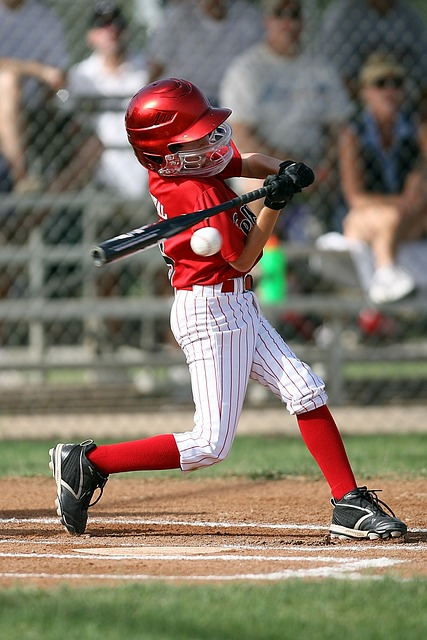
In the quest to enhance the game while ensuring the safety of the players, the use of aluminum bats has often been questioned. The higher batted ball speeds and trampoline effect associated with aluminum bats have been flagged as safety hazards, especially in Little League and youth leagues where players have less reaction time.
In response to these safety concerns, modifications to baseball bats have been implemented, and measures have been put in place during Little League games and in other amateur baseball leagues to ensure player safety. For instance, some leagues limit the type of aluminum bats that can be used based on their 'drop ratio' (a measure of bat's weight compared to its length), and others require that a metal bat meet specific performance standards to be allowed in play.
One such standard is the USA Baseball Bat standard (USABat), implemented by USA Baseball, the national governing body for baseball. This standard aims to make non-wooden bats, or aluminum bats, perform more like wooden bats, in turn, making the game safer for young players. Since 2018, many youth leagues have adopted this standard.
Key bat manufacturers such as Easton and Louisville Slugger have played a significant role in creating safer aluminum bats. They've invested in research and development to produce bats that not only comply with the USABat standard but also meet the players' performance demands. These include features such as extended sweet spots, enhanced grip, and balanced swing weights.
The Little League safety considerations extend beyond just the type of bat. Player training, protective gear, and the rules of the game all play crucial roles in maintaining a safe environment. As a player or a parent, understanding these safety aspects and the steps taken to mitigate risks is a fundamental part of participating in and enjoying the game of baseball.
Baseball isn't just a game; it's a platform that's often used to shed light on critical causes and promote awareness. One such example is the use of pink bats in Major League Baseball (MLB) on Mother's Day. These specially crafted bats not only represent a break from tradition but also serve a noble cause: raising awareness about breast cancer.
The pink bats debuted in the MLB on Mother's Day in 2006, and Major League Baseball players have since been a symbol of baseball's commitment to fighting breast cancer. Every swing with a pink bat is a tribute to mothers and a pledge of support to millions of women battling this disease. The initiative also provides fans the opportunity to contribute by auctioning these pink bats after the game, with proceeds going to breast cancer charities.
Beyond this, baseball has been leveraged for various other awareness campaigns and special events. From promoting environmental sustainability to fighting against child abuse, baseball has time and again proven its social relevance and significance.
These unique bats in special events not only add color and variation to the game but also remind us that baseball, like other sports, serves a greater purpose. It is not just about winning or losing; it's about unity, celebration, and most importantly, about making a difference in the community. It shows that with every swing and hit, players and fans together can contribute to a larger cause.
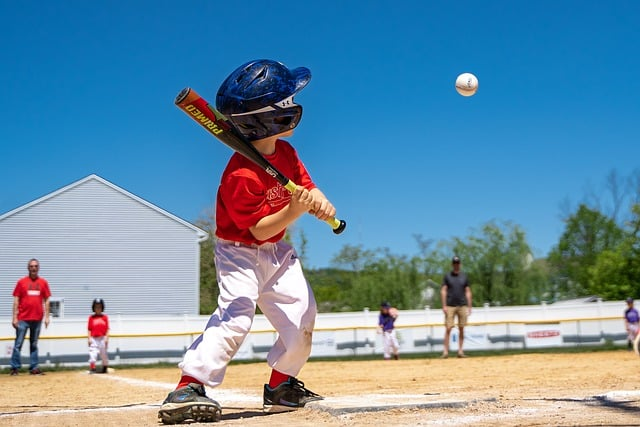
Delving into the world of baseball, we discover a collection of fascinating tales and intriguing facts about baseball bats. Did you know that the most famous home runs were hit with wooden bats? Babe Ruth, one of baseball's greatest legends, often swung with a monstrous 36-inch, 42-ounce hickory bat. His prodigious power was on display when he called his shot and blasted a home run during the 1932 World Series.
The aluminum bat era, ushered in during the late 20th century, has also had its share of memorable moments. In 1998, during the NCAA Division I Baseball Tournament, Wichita State's Pat Magness hit a record-setting grand slam using an aluminum bat, the ball traveling an estimated 550 feet!
Yet, a powerful bat is nothing without excellent hand-eye coordination. It's believed that a Major League Baseball player has just 125-150 milliseconds to decide whether to swing at a pitch and where to hit it. That's faster than a blink of an eye!
Intriguing stories also abound around the practice of corking the bat. This illicit technique involves hollowing out the barrel and filling it with cork or rubber balls to make the bat lighter. Notable players, like Sammy Sosa, faced suspensions for using corked bats. While it's a popular belief that corking enhances the bat's performance, scientific studies show it might not provide a significant advantage.
Remember, while these anecdotes and facts bring color to the game, the heart of baseball still lies in the skill, strategy, and spirit of its players. From the crack of the bat to the cheer of the crowd, each game is a testament to these timeless elements.
When it comes to selecting a metal bat, the choice can be daunting with so many factors to consider. Here's a guide to help you make an informed decision:
Weight: Lighter bats offer better control and faster swing speed. Heavier bats, on the other hand, provide more power but may decrease swing speed. Find a bat that suits your strength and swing style.
Length: The length of the bat should be proportional to your height and arm length. A longer bat gives more reach, but it's also heavier.
Material: Decide whether you want an aluminum, wooden, or composite bat. Each has its advantages and disadvantages as discussed earlier.
USABat Stamp: For youth leagues adhering to USA Baseball's standards, look for bats with the USABat stamp. This ensures the bat meets the necessary performance and safety guidelines.
The importance of choosing the right wood, composite or metal bat can't be overstated. The bat's attributes need to match your playing style, body structure, and level of play. For instance, young players might benefit from lighter aluminum bat or composite bats for better control and swing speed. Adult players, especially those in professional leagues, might prefer heavier wooden bats for their durability and power.
While your comfort is crucial, so too are the regulations of your league. Make sure to follow the guidelines set by your league or organization when purchasing a metal bat. Remember, a good bat not only complements your skill set but also builds confidence at the plate. Equip yourself wisely and let your bat do the talking on the field.
The field of baseball bat technology is not stagnant and continues to evolve with time. Scientists and manufacturers are constantly exploring ways to improve bat design and materials to enhance performance, safety, and longevity of aluminum bats for Little League and college players alike. While the classic wooden bat will always hold a revered place in baseball, we can expect to see further development in aluminum and composite bats, as they offer more room for technological advancements.
On the horizon, we might witness more eco-friendly manufacturing processes and sustainable materials making their way into bat production. The industry is already witnessing the use of bamboo and other renewable resources in bat making.
In addition, changes in bat regulations may also play a critical role in shaping the future of baseball bats. As we discussed earlier, safety concerns related to aluminum bats may lead to further restrictions or requirements. The introduction of the USABat standard by USA Baseball is a perfect example of how rules can influence the use of different types of bats.
But no matter what the future holds, it's clear that the fundamental elements of choosing a bat - weight, length, and personal comfort - will remain as important as ever. The bat, after all, is an extension of the batter. It's about finding the perfect tool that complements a player's skill and style, helping them achieve their best performance on the field.
In the end, the future of baseball bats will continue to be shaped by a balance of tradition, innovation, and the ever-changing needs of the sport and its players.
We have come a long way since the inception of baseball, and the evolution of baseball bats has been an integral part of this journey. The debate between aluminum bats and wood bats is not just about comparing two types of equipment; it reflects the dynamic nature of baseball as a sport, accommodating both tradition and innovation.
While wooden bats, with their rich heritage, continue to dominate the professional leagues, aluminum bats have carved their own space in amateur and youth leagues. Each offers distinct advantages in terms of performance, cost, durability, and suitability to different levels of play.
However, one cannot overlook the safety considerations associated with these bats, particularly aluminum ones. As we continue to advance bat technology, it's crucial to keep safety at the forefront of our discussions and decisions.
Moreover, it's inspiring to see how baseball, through events like the use of pink bats on Mother's Day, has contributed to raising awareness for critical causes. Beyond the sport itself, baseball has demonstrated its potential to create positive social impact.
As we venture into the future, the fascinating world of baseball bats will continue to evolve, marked by both the steady comfort of tradition and the exciting promise of innovation. However, the choice of bat will always remain deeply personal to each player, dictated by their individual preferences, skill levels, and the rules of their respective leagues.
We hope that this comprehensive exploration has given you a greater understanding of the complex dynamics surrounding baseball bats. We encourage you to share your thoughts, experiences, and questions, and to engage further in this ongoing conversation. Whether you're a baseball enthusiast, a curious reader, or a player deciding on your next bat, remember that at the heart of the debate, it's all about the love of the game.
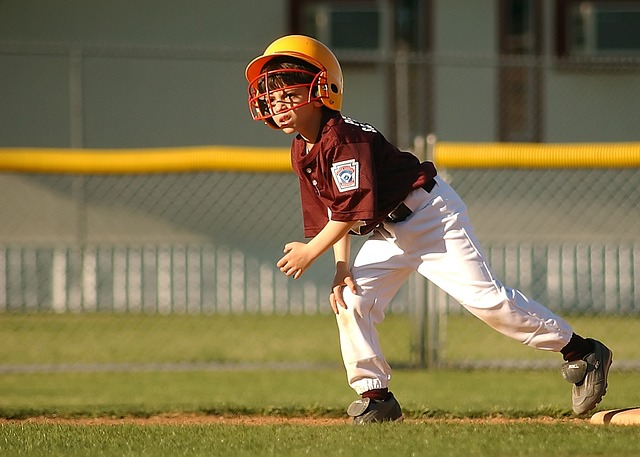
Little League primarily uses aluminum bats due to their lighter weight, making them easier for younger players to swing. Additionally, aluminum bats are more durable and less expensive than wooden bats, which makes them more practical for use in youth leagues.
While aluminum bats can potentially hit a ball harder and faster than wooden bats, safety measures, such as performance restrictions set by USABat standards, are in place to manage these risks.
Yes, Little League players can use wooden bats as long as they meet the appropriate size and safety regulations. However, aluminum bats are typically preferred due to their lighter weight and durability.
Aluminum bats are typically easier for younger players to handle because of their lighter weight. They also tend to be more durable and cost-effective than wooden bats.
Aluminum bats typically have a larger sweet spot and can hit a ball farther than wooden bats, which can give players a performance advantage. However, using wooden bats can help young players develop better batting techniques due to their smaller sweet spot and balanced weight distribution.
When buying an aluminum bat for a Little League player, consider factors like the bat's weight, length, and barrel size. Additionally, make sure that the bat meets the USABat standards.
Over the years, aluminum bat technology has significantly improved, leading to enhanced performance characteristics. In response to safety concerns, standards have also been implemented to regulate the performance of aluminum bats in Little League and other youth leagues.
Apart from Little League, aluminum bats are commonly used in other youth leagues, high school baseball, and college baseball. However, professional leagues like Major League Baseball require the use of wooden bats.
See Also: Best Youth Baseball Bats
Chris Sloan is a former baseball league commissioner and travel baseball coach who has made significant contributions to the sport. In 2018, he founded selectbaseballteams.com, a website that helps parents find youth and travel baseball teams in their local areas. Since its launch, the website has experienced impressive growth, offering a wealth of resources including teams, news, tournaments, and organizations. Chris's unwavering passion for baseball and his innovative approach to connecting parents with quality baseball programs have earned him a respected reputation in the baseball community, solidifying his legacy as a leading figure in the world of youth and travel baseball.
There are 0 comments on "Why Does Little League Use Aluminum Bats?"
david graham says:
"With no current MLB team in Canada,..."
On With no current MLB team in
Charles Chavez says:
"To All Coaches: Do you have13U or..."
On Looking for Games
Charles Chavez says:
"To All Coaches: Do you have13U or..."
On Looking for Games